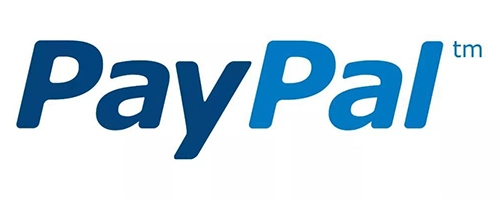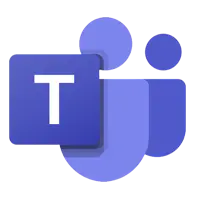- English
- Español
- Português
- русский
- Français
- 日本語
- Deutsch
- tiếng Việt
- Italiano
- Nederlands
- ภาษาไทย
- Polski
- 한국어
- Svenska
- magyar
- Malay
- বাংলা ভাষার
- Dansk
- Suomi
- हिन्दी
- Pilipino
- Türkçe
- Gaeilge
- العربية
- Indonesia
- Norsk
- تمل
- český
- ελληνικά
- український
- Javanese
- فارسی
- தமிழ்
- తెలుగు
- नेपाली
- Burmese
- български
- ລາວ
- Latine
- Қазақша
- Euskal
- Azərbaycan
- Slovenský jazyk
- Македонски
- Lietuvos
- Eesti Keel
- Română
- Slovenski
- मराठी
- Srpski језик
3D Circuit Board Technology in PCBA Processing: Breaking the Boundaries of Traditional Technology
2025-03-31
As the complexity and performance requirements of electronic products continue to increase, traditional 2D circuit board (PCB) technology has gradually shown its limitations. To meet this challenge, 3D circuit board technology has emerged and has shown great potential in PCBA (Printed Circuit Board Assembly) processing. This article will explore the application of 3D circuit board technology in PCBA processing and how it breaks the boundaries of traditional technology.

I. Overview of 3D Circuit Board Technology
1. Definition of 3D Circuit Board
3D circuit board technology refers to a technology that designs and manufactures circuit boards in three-dimensional space. Unlike traditional 2D circuit boards, 3D circuit boards can realize circuit connections on multiple levels of the circuit board, making the design of the circuit board more compact and efficient. This technology uses multi-layer structure and three-dimensional wiring to break through the limitations of traditional planar design.
2. Technical advantages
The main advantages of 3D circuit board technology include high space utilization, improved signal transmission efficiency, and increased component integration. By arranging circuits on multiple levels, 3D circuit boards can significantly reduce the area of the circuit board, thereby achieving smaller and lighter product designs. In addition, the three-dimensional wiring of 3D circuit boards can reduce signal interference and improve signal transmission speed and stability.
II. Application of 3D circuit board technology in PCBA processing
1. Improve design flexibility
1.1 Three-dimensional circuit design
The application of 3D circuit board technology in PCBA processing can achieve more complex three-dimensional circuit design. Engineers can arrange circuits and components in multiple dimensions to achieve higher density circuit integration. This three-dimensional design not only saves space, but also allows more functions to be implemented in a smaller volume, thus meeting the functional and performance requirements of modern electronic products.
1.2 Component integration
3D circuit board technology supports the integration of more components such as sensors, chips, and memory inside the circuit board. By arranging these components at different levels of the circuit board, the need for external connections can be reduced and the reliability and stability of the system can be improved. This integration method has been widely used in many high-performance electronic products.
2. Improve production efficiency
2.1 Automated production
3D circuit board technology can support a higher degree of automated production. Through advanced manufacturing equipment and technology, automatic assembly, testing and inspection of circuit boards can be achieved, thereby improving production efficiency and reducing manual intervention. Automated production not only shortens the production cycle, but also improves the consistency and quality of products.
2.2 Shorten the R&D cycle
Using 3D circuit board technology can speed up the product R&D cycle. Engineers can quickly verify the design scheme and make adjustments through virtual simulation and rapid prototyping. This can reduce the time of design iteration and speed up the launch of products from concept to market.
3. Optimize heat dissipation and signal transmission
3.1 Heat dissipation management
In PCBA processing, 3D circuit board technology can effectively solve the heat dissipation problem. By optimizing the structural design and material selection of the circuit board, more efficient heat dissipation management can be achieved, the operating temperature of electronic components can be reduced, and the reliability and service life of the system can be improved.
3.2 Signal transmission
3D circuit board technology can optimize the signal transmission path and reduce signal interference and attenuation. Stereo wiring can achieve a shorter signal path, thereby improving the speed and stability of signal transmission. This is especially important for high-frequency and high-speed electronic applications, such as communication equipment and high-speed computer systems.
III. Challenges faced by 3D circuit board technology
1. Design complexity
The complexity of 3D circuit board design is relatively high, requiring more design tools and technical support. Engineers need to have in-depth expertise and skills to ensure the accuracy and manufacturability of the design.
2. Manufacturing cost
Although 3D circuit board technology offers many advantages, its manufacturing cost is high. This is mainly due to the complexity of the manufacturing process and the cost of materials. As the technology matures and the scale of production expands, the cost is expected to gradually decrease.
3. Technical standards
At present, the standards and specifications of 3D circuit board technology are not unified. When enterprises adopt this technology, they need to pay attention to relevant technical standards and industry specifications to ensure product compatibility and consistency.
Conclusion
3D circuit board technology has the potential to break through the boundaries of traditional technology in PCBA processing. By improving design flexibility, improving production efficiency, and optimizing heat dissipation and signal transmission, 3D circuit board technology has brought new opportunities for the development and manufacturing of electronic products. Despite the challenges of design complexity, manufacturing cost and technical standards, with the advancement of technology and the expansion of applications, 3D circuit board technology will play an increasingly important role in the future electronics industry and promote product innovation and technological development.
-
Delivery Service






-
Payment Options









